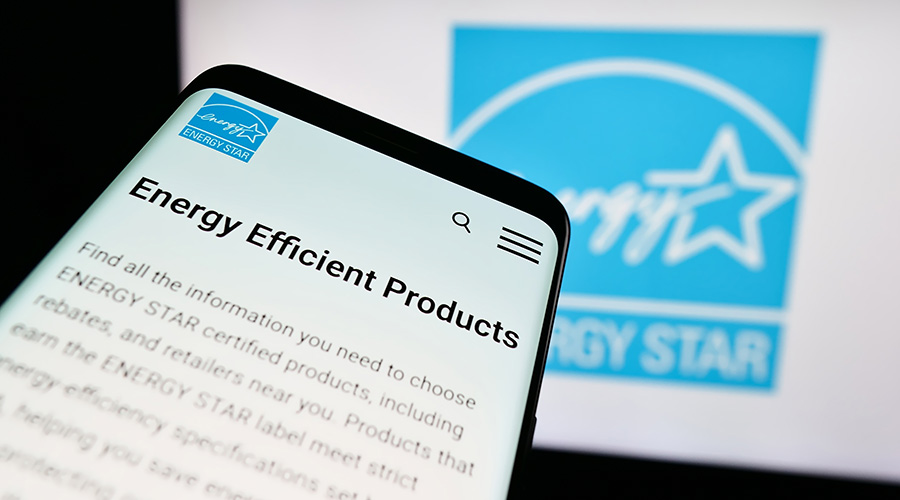Smart Energy: What Is Your Facility's Climate Contribution?
Focusing on several available tools and strategies can help facility managers minimize their buildings’ energy use, greenhouse gas emissions, and effect on climate change.
The effects of climate change are no longer limited to warnings. Rather, they’ve materialized in the form of increasingly severe weather. With each passing year, the effects of climate change can be felt through more powerful and deadlier natural disasters and ongoing warming temperatures. In the summer of 2021, the Intergovernmental Panel on Climate Change (IPCC) released its Sixth Assessment Report. It noted that much of the damage to our planet would be irreversible for millennia due to human activities. It also emphasizes that there is no spare time to take meaningful action to prevent more significant effects.
Among the large amount of research related to specific industries and their impact on climate change, a notable statistic is related to the building and construction industry. This sector accounts for 38 percent of all global emissions, yet less than 1 percent of new buildings assess their carbon footprint. Similarly, concrete is the top contributor to embodied carbon emissions in buildings, responsible for up to 55 percent of emissions. These concerning statistics make it imperative for facility managers and building owners to assess their carbon impact and take action to reduce the carbon footprint of their buildings.
While many facility managers and building owners are beginning to mobilize efforts to address their impact, it can often seem a daunting task. Fortunately, there are tools, products, and methods for the sector to utilize and begin to calculate, understand, evaluate, and ultimately select low-carbon materials during the procurement process. Through these actions, the industry can begin to address its role in climate change.
The types of carbon
Not all carbon types are equal. For built spaces, two major types of carbon are at play – operational and embodied carbon:
- Operational Carbon is defined as the GHGs emitted during the use of a building.
- Embodied Carbon is the carbon footprint of a material and considers all GHGs emitted throughout the product’s supply chain, installation, use, replacement, and end of life disposal.
While crucial to reduce both emissions types, reducing embodied carbon is the most urgent opportunity. A recent United Nations Environment Programme report found that embodied carbon emissions account for 10 percent of greenhouse gas emissions, which cannot be reduced over time.
Embodied carbon is an essential part of identifying a facility’s environmental impact when conducting a Life Cycle Assessment (LCA). When facility managers and building owners have accurate assessments of the embodied carbon of their buildings, they can make informed decisions that can help them opt for low-carbon materials.
The key first step
Life Cycle Assessments, or LCAs, are a method used to assess the environmental impacts of a product or facility during its whole life cycle – from raw material to a product’s eventual disposal or recycle. LCAs are key for both new and current facilities in evaluating carbon impacts. They are a critical first step to understand a building’s impact on the environment. A full LCA allows facility managers and building owners to evaluate and compare materials choice, identify high environmental impact areas of a facility, and provide a baseline for assessing a building’s performance over time.
When assessing the LCA of a building, there are four key stages: setting the goal and scope for the assessment, an inventory analysis, an impact assessment, and the interpretation of the results. Here’s an example: when adding or replacing a facility’s flooring, facility managers can assess how the new flooring will contribute to overall carbon impact. To reduce potential environmental effects, they can opt for carbon neutral or carbon negative flooring products
to achieve sustainability goals. Opting for low-carbon materials is a significant opportunity for facility managers to begin to reduce their built space’s impacts.
Existing resources, such as the Life Cycle Assessment of Buildings: A Practice Guide from the Carbon Leadership Forum, highlights the details and implementation considerations for LCAs, taking a once daunting to a now manageable task for facility managers.
EPDs and their role
For our food and grocery items, nutrition labels help us determine what foods are healthy and unhealthy. The building industry has a similar process for selecting products. Environmental Product Declarations (EPDs) are similar to nutrition labels by detailing the environmental impacts of a product’s raw materials and manufacturing process. They are necessary to analyze the embodied carbon emissions associated with a new building, and the industry struggled to find a strong business case to invest in the EPD process.
Moreover, the published EPDs could only be found in a variety of different EPD databases, some of them proprietary and competitive with each other. And virtually all EPDs have been unstructured and print-only PDF files — documents that could not be easily evaluated or compared digitally.
Access to EPD data is essential to accurately and easily measure the emissions associated with our buildings and their materials. Fortunately, new tools have emerged to make EPDs more accessible and consistent in their format to improve and standardize the process of comparing materials.
Carbon calculator
The Embodied Carbon in Construction Calculator (EC3) is a free, easy to use tool that allows benchmarking assessment and reductions in embodied carbon per materials category, focused on the upfront supply chain emissions of construction materials.
The tool utilizes building material quantities from construction estimates and/or BIM models and a robust database of digital, third-party verified EPDs. Powered by this data, the EC3 tool can be implemented in both the design and procurement phases of a construction project to look at overall product stage embodied carbon emissions, enabling the specification and procurement of low-carbon options.
The EC3 tool also allows building owners and facility managers to assess supply chain data to create EPD requirements and set embodied carbon limits and reductions at the construction material and project scale. The tool recently surpassed 16,000 users signaling the building industry is eager to better understand their embodied carbon impact. Drawing and analyzing data from over 46,000 EPDs, the tool has been used for over 2,000 building projects and has seen over 50,000 material searches in the past six months. This shows that it is quickly becoming an essential resource for the embodied carbon space.
The tool and its subsequent effect on the industry are driving demand for low-carbon solutions and incentivizing construction materials manufacturers and suppliers to invest in disclosure, transparency and material innovations that reduce the carbon emissions of their products.
Taking actions
The time to take meaningful action against climate change is now. Facility managers and building owners can partake in green building certification programs and set embodied carbon baselines and reduction targets.
As facility managers begin new and/or refurbishment projects, they can opt to purchase and specify low-carbon materials using tools like EC3 to help them make informed decisions. Selecting low-carbon materials has a domino effect. It can incentivize manufacturers and suppliers to invest in EPDs, set their own embodied carbon reduction targets, and bring more transparency and material innovation to reduce the embodied carbon impact of their products.
Policy measures as a way forward
It rests on us to do our part to lessen the negative impact of human activity on our planet. As state and federal policies introduce low-carbon procurement policies, as seen in Colorado, California, Connecticut, Minnesota, New York, New Jersey, Oregon, and Washington, facility managers and building owners will have to evaluate how these policies may affect them and what they can do beyond them.
These policies and the increased awareness of climate change are driving demand and incentivizing manufacturers and suppliers to offer low-carbon materials. In effect, more sustainable options are becoming available to facility managers and building owners. By analyzing LCAs, using procurement tools like EC3 to demonstrate the product stage embodied carbon impacts, and opting for low-carbon options during the construction or refurbishment process, facility managers can drive transformation and mitigate their carbon impact.
Stacy Smedley is executive director of Building Transparency.
Related Topics:












